Outcomes of the REGIO-MOB learning path 2021-2022
A summary dedicated to REGIO-MOB experience 2021-2022 to the improvement of regional sustainable mobility policies on the basis response to the COVID-19 crisis.
European regions are facing an increasing mobility demand while coping with higher congestion levels. Undoubtedly, there is a strong need to increase the use of sustainable transport modes meaning, above all, promoting intermodality, technical innovation and the use of cleaner and more efficient systems. Hence, European regions need to undertake the transition towards low-carbon and resource efficient transport systems in order to increase mobility, remove major barriers and fuel growth and employment.
In this challenging context, where an effective action requires strong interregional cooperation, arises REGIO-MOB, whose overall objective is to secure Europe’s sustainable growth by promoting sustainable mobility. Therefore, influencing the related instruments in each concerned territory and contributing to their improvement and more efficient performance, as a result of mutual interregional learning.
ADDITIONAL ACTIVITY 2021-2022 - The REGIO-MOB project coordinated by ANCI Lazio has received approval for an additional activity (1st October 2021- 30 September 2022), as result among the 78 approved projects, for the implementation of activities dedicated to supporting European regional policy makers following the impact of the COVID- 19.
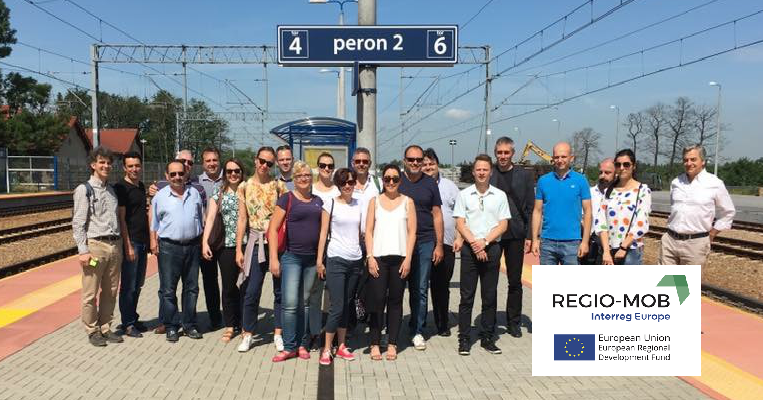
REGIO-MOB partners expect to contribute to the consolidation of sustainable mobility in their regions by improving their policies performance as a result of a shared learning process. This improvement will be materialised through the developement of regional mobility strategies with an holistic approach (environmental, economic & social factors). To this end, every partner will carry out a regional analysis on their needs&best practices, which will be further transferred through the 7 regional workshops.
In addition, each one of them will set up a Regional Stakeholders Group that will enrich the process & will also ensure the key stakeholders engagement. This process’ results will be gathered in a Guide on Recommendations for more efficient & cleaner mobility prior to undertake the development of the 7 Regional Mobility Plans. The outputs will directly benefit the partners, our stakeholders and clearly our regions. Eventually, we aspire to influence as well other regions not originally involved in the project. Then we will be able to say that we have fully succeeded.
€1,327,816.00
Low-carbon economy
During the additional activity (2021-2022) the REGIO-MOB partnership produced a collection of good practices dedicated to tackling the Covid-19 pandemic by promoting improvements to regional policy tools for sustainable mobility and contributing to more efficient implementation, such as result of mutual interregional learning.
Investment Priority IP.4e. Promotion of low carbon strategies in all territories, particularly in urban areas,including the promotion of sustainable urban and multimodal mobility and adaptation measures with an impact in mitigation.
Specific Objective OE.4.5.1. Promotion of sustainable urban mobility:clean urban transport,public transport,connection between urban and rural areas,improvements of road networks,cycling,pedestrian mobility,electric mobility&development of clean energy supply systems.
In Andalusia the consolidation of a sustainable mobility model is essential, as evidenced by the fact that this is a priority issue not only for the ROP ERDF but also for Regional and Local Authorities. In addition as can be seen referred to further on the region has been trying to consolidate sustainable mobility patterns for more than a decade, though not completely successfully yet due to the slowness and complexity of the processes.
It has to be taken into account also the wide regional coverage, which hampers the implementation of these strategies. So as long as the region is still very far from the desired model of urban mobility,it is essential to undertake improvements on the existing instruments and adopting different approaches (or shifting the existing ones). And these improvements can be inspired by other regions experiences and initiatives as well as the new approaches can be easily learnt from other territories.
Transport Development Strategy in the Republic of Slovenia: Development and Promotion of sustainable mobility.
The Transport Development Strategy is the most important instrument to articulate sustainable mobility in the Republic of Slovenia. Its purposes can be summarized as follows:
Every national transport policy has an important role in the country’s general policy, since it enables the operation and development of society as a whole. An optimum transport system is a fundamental condition for a country’s efficient operation, since it provides for the implementation of other country’s policies and is also regarded as a precondition for economic development. The transport policy vision is defined as the provision of sustainable mobility for the population and supply to the economy. Exchanging of the best practices can improve and promote sustainable mobility within regions achieving interregional learning processes. In terms of results, cooperation can influence policy instruments.
Investment Priority: Promotion of low-carbon emission strategies for urban areas, including the promotion of multimodal sustainable mobility and relevant measures of adaptation and mitigation, Action 4.6.1 Infrastructure construction and interchange development aimed at increasing collective mobility and distributing goods in an environmental friendly way and related transport systems and Action 4.6.3 - Smart transport systems.
The regional implementation strategy includes a series of integrated interventions which include "soft" and "hard" measures. In this sense, the ROP contributes to a more efficient use of infrastructure, vehicles & logistics platforms for the Roma smart city project (ITS Systems), in line with the PGTU-General Plan of Urban Transport of Rome.
Innovative measures will be in place to contain environmental and social impacts of mobility in the metropolitan area (exchange nodes, new generation vehicles and trains),in order to ensure comfort and safety to the collective movements and the use of information technology to support the management and control of private mobility and public transport-Intelligent Transportation Systems. These actions are combined with direct interventions to complete the infrastructure network (railway), the exchange nodes,modal integration and to facilitate the use of collective means and of low environmental impact (car/bicycle sharing, city logistic, environmental islands) that will be supported by other funding sources.
3.3 Increasing availability of transport areas with the lowest availability in the region
3.4 Support for integrated transport systems management
The activities carried out in the area of transport should be updated and aimed at creating a coherent, user friendliness, sustainable transport system, contributing to reduce the negative impact on the environment. Mainly best practices work out during the project will be transferred to the Development Strategy of the Małopolska Region for 2011 – 2020 (update of document planned for 2017).
Close cooperation with Marshal Office of Małopolska Region through established regional reference group will improve accessibility of transport in our region (Area 3 and Area 4 of Development Strategy of the Małopolska Region) by testing new transport capacity with municipalities from the region of Malopolska.
The REGIO-MOB project entails the development of mobility plans which will be used for investment activities under Integrated Territorial Investment (Support sustainable multi-modal urban mobility by developing sustainable metropolitan transport).
Two priority axis (PA) shall be considered due to their strong connection with the issue addressed:
PA3 -Promoting the low-carbon economy through investments in energy efficiency in buildings, public lighting and sustainable multimodal urban mobility.
PA4 - Supporting sustainable integrated urban development and regeneration of deprived urban areas.
Within these axis, 2 specific objectives concerned:
These specific objectives chosen aim to reduce carbon emissions in urban areas based on sustainable urban mobility plans. In line with EU CO2 reduction policies, the expected contribution to the mentioned objectives in all urban areas, namely to support the transition to a low-carbon dioxide economy in all sectors, shall be provided by lowering exhaust emissions from transport, offering alternative transportation options and discouraging private car use, making cities better places to live for their inhabitants.
Investment Priority 7b - Enhancing regional mobility by connecting secondary and tertiary nodes to TEN-T (Trans-European Transport Networks) infrastructure, including multimodal hubs.
The Regional O.P. is focused mainly on building new infrastracture projects (regional and national roadworks). The O.P. should be more focused on sustainable mobility and urban quality of life (e.g. road and personal safety in urban transport, enery saving of transport modes, renewal of urban areas to be more pedestrian friendly, priorities to alternative modes of transport such as bicycles, walking, etc.) and promotion of new measures and technologies for the environment. It is also important to give priorities to better co-ordinate and integrate transport modes, avoid overlaps of responsibility and promote an integrated transport authority for all modes (such as public transport and road traffic management/control).
The RTS is a statutory document setting out the transport policy framework for South East Scotland for a 10-15 year period. The current RTS was prepared in 2008, with an update in 2015. It supports wider Scottish Government economy, social and environment aims (e.g.the National Carbon Reduction Target) and links with the strategic land use/development plan for the region.
Delivery of the measures included in the RTS is a matter for SEStran and the various stakeholders–in particular the 8 partner local authorities who, together with the Scottish Government, hold the major budgets for transport investment. SEStran itself has only extremely limited funding. Delivery of regional transport priorities has been hampered as local authorities have had to cut budgets and focus on local and immediate priorities.
As a result there are gaps in cross-boundary transport provision within the concerned area, congestion is increasing particularly in the periphery of the city and surrounding areas, and environmental targets are being missed. The importance of tackling these issues will grow as the economy and population of the region increase as forecast, and more effective and sustainable approaches to delivery of regional transport services and infrastructure will need to be found. The Strategy therefore requires a comprehensive review, including improving the interactions between different levels of government and better prioritisation of policies and interventions to meet key objectives.
A summary dedicated to REGIO-MOB experience 2021-2022 to the improvement of regional sustainable mobility policies on the basis response to the COVID-19 crisis.
The final video storytelling of the additional activity 2021-2022 of the REGIO-MOB project contains inputs from the 6 partners stakeholders from 6 EU Regions
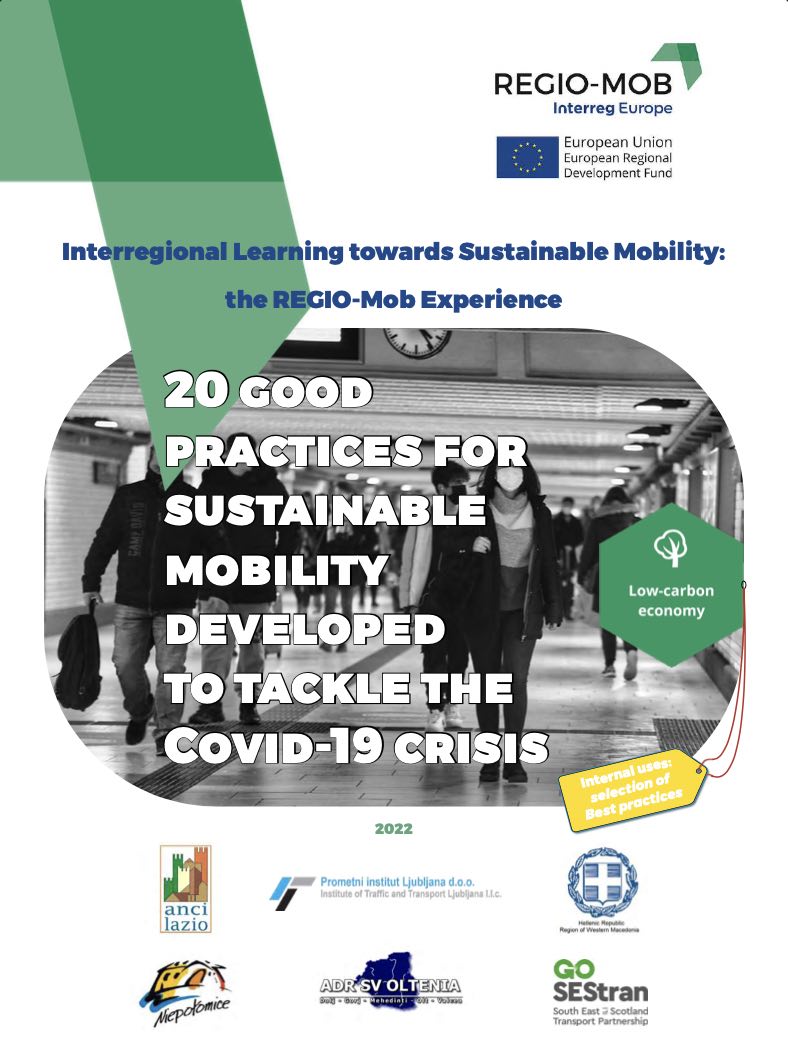
This volume collects the 20 good practices on sustainable mobility, selected by the REGIO-MOB partners to fight Covid-19 and supporting local policies
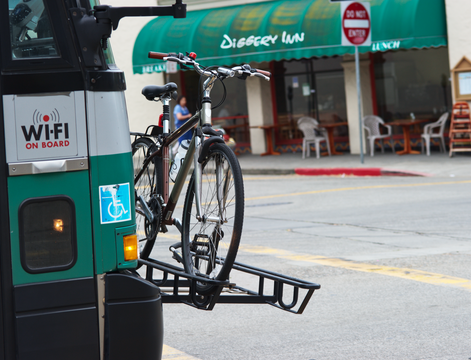
Read about the REGIO-MOB project, which has been selected as favourite story in low-carbon economy.

High-level Political Forum - Interregional Learning towards Sustainable Mobility in Europe: the REGIO-MOB Experience

A summary about the impact of regional action plans of REGIO-MOB partnership is ready to shared from the Interreg Library.
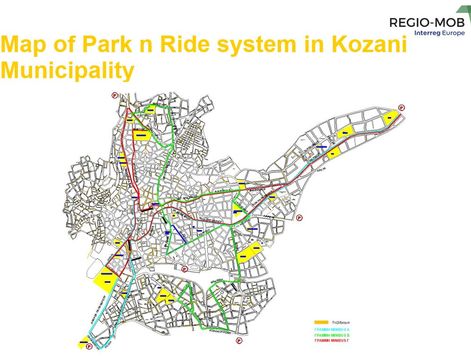
Map of Park&Ride system proposed in Kozani (GR) under REGIO-MOB Action Plan presented by Regional Western Macedonia.

To discuss about the future of Sustainable Mobility in European Regions and introduce REGIO-MOB's Action Plans.
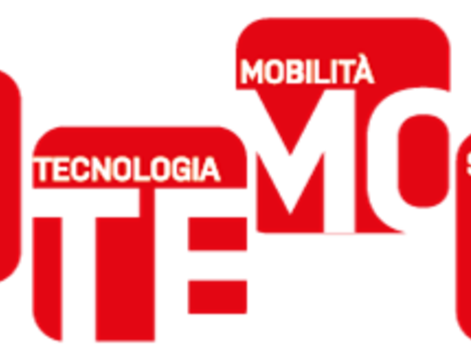
REGIO-MOB project will present the project results and the Best Practices from Scotland
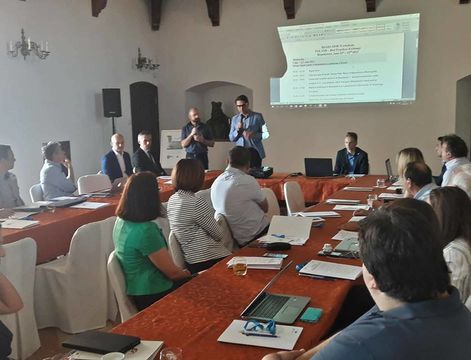
Workshop and exchange of experiences in Niepolomice on 21-22 June 2017